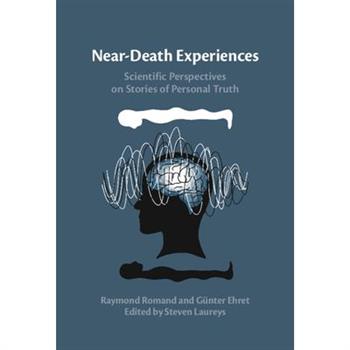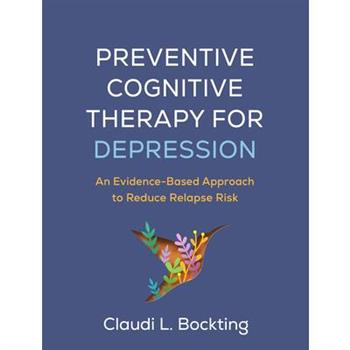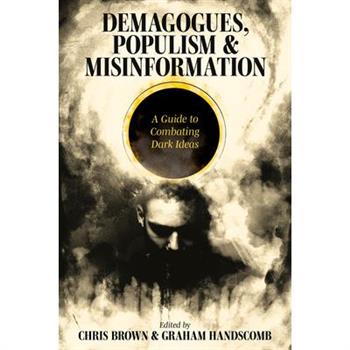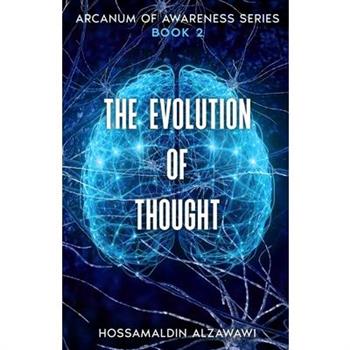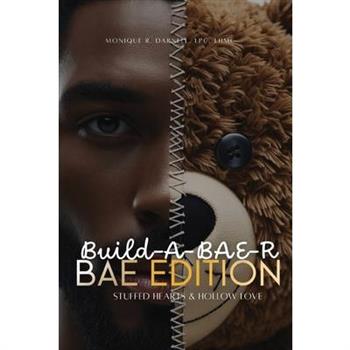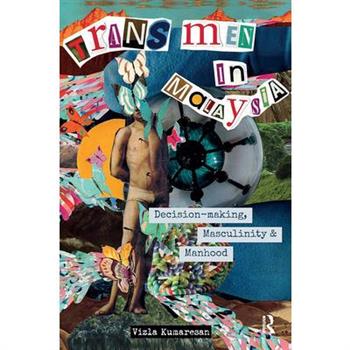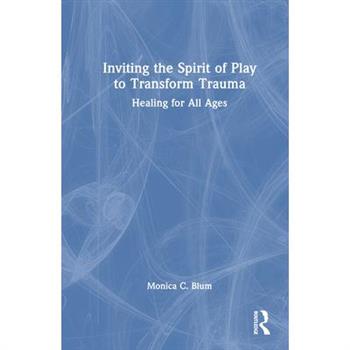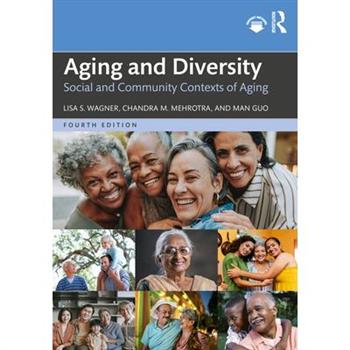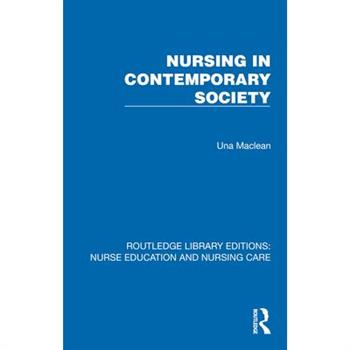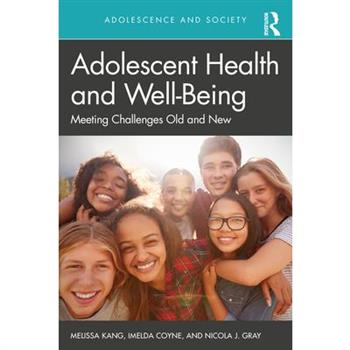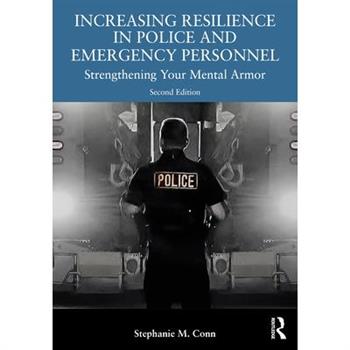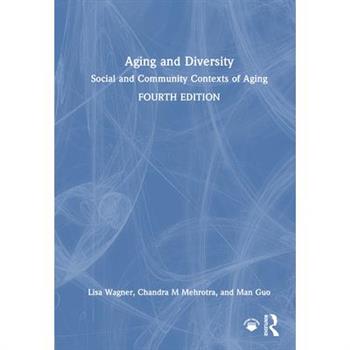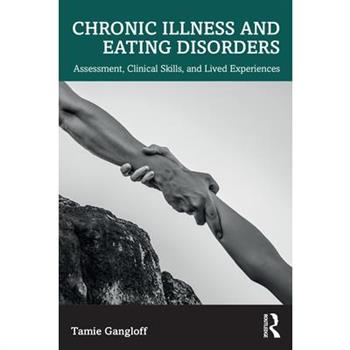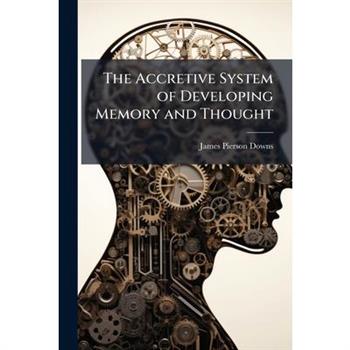Between Hubris & Fear
Between Hubris & Fear: The Crisis of the Modern Self - Volume I A stirring nonfiction book about the loss of our values in a torn world Why does our society seem more disoriented than ever, despite progress, freedom, and prosperity? "Between Hubris & Fear: The Crisis of the Modern Self" relentlessly exposes how the modern self is torn apart between self-aggrandizement and deep insecurity - and in the process, central humanistic values such as decency, loyalty, responsibility, and morality are lost. This book is a passionate plea for a return to what defines our humanity. It analyzes, with a clear perspective and philosophical depth, how egocentrism, moral arbitrariness, and collective fears are destabilizing our society. Instead of true freedom, we are experiencing an identity crisis - and with it the gradual disappearance of empathy, solidarity, and spirituality. This book invites you to pause. To reflect. And perhaps even to take new paths. It combines philosophical depth with understandable language - and is aimed at all those who want to understand, not just observe. What you can expect from this book: - Decline in values & ethics in the modern age - Hubris and self-promotion in social media - Culture of fear and loss of identity - The role of humanism in the 21st century - Paths to a new moral orientation For all those who sense that something crucial is being lost in our society - and who are looking for answers, guidance, and true depth. This book is a wake-up call - and offers hope. For you. For us. For a better society.
Making Meaning
It is delightful to see another book by Lynne Souter-Anderson, contributing to the field of Clay Therapy. Her first book, Touching Clay, Touching What?: The Use of Clay in Therapy (2010), gave credence and credibility to using clay in therapy. It was a pioneering book in the field of the creative arts therapies and gave a broad perspective on working in this modality with all age groups.This new book is written for already qualified professionals who want to add the use of Clay Therapy in their work with children and adolescents. It is a hands-on book for practitioners and easy to read. However, the application of clay therapy in this specialist field requires appropriate additional training. Lynne's book is a significant addition to the small but growing library of books on the market about specialist therapeutic approaches with young children and adolescents. Play Therapy UK (PTUK)'s research analysis of over 300,000 therapeutic sessions using the 'toolkit '(sand, music, clay, art/drawing, puppets, movement, drama, therapeutic story, creative visualisation etc.) has shown that clay is the fifth most used medium in play therapy sessions. It is therefore an important medium to offer to children and adolescents to support their healing process. Lynne achieves a good balance between the application of theory and the actual process, which is always valuable for the reader. This is especially well demonstrated in Chapter 1, 'Clay Therapy: Theoretical Underpinning of Clay Therapy', in which the author explains her own theoretical basis, 'The Theory of Contact: Physical, Emotional, Spiritual and Metaphorical'. She uses the analogy of the 'five lenses' to demonstrate the stages of immersion and discovery in the clay therapy process, and includes an invaluable diagram to clarify her theory about the evolving nature of the process.For me the book comes really alive through the ten case studies, which demonstrate how clay therapy has been used with the younger clients and adolescents, a client group that can proveto be difficult to reach and work with in therapy. The illustrations used deepen the experience and understanding of the process for the reader. Throughout the case studies glimpses of thequality of the therapist's presence are seen, because she has the courage to show her own process thereby offering authenticity to the work. To be able to do this effectively specialised training is required.There is still very little published in the field, but it is heartening and exciting to see recent research initiatives described in the master's dissertations produced by students at the Academy ofPlay and Child Psychotherapy and Cambridge University, which are included towards the end of the book. Lynne's book is a 'must-read' for all creative play and arts therapists.
Between Hubris & Fear
Between Hubris & Fear: The Crisis of the Modern Self A stirring nonfiction book about the loss of our values in a torn world Why does our society seem more disoriented than ever, despite progress, freedom, and prosperity? "Between Hubris & Fear: The Crisis of the Modern Self" relentlessly exposes how the modern self is torn apart between self-aggrandizement and deep insecurity - and in the process, central humanistic values such as decency, loyalty, responsibility, and morality are lost. This book is a passionate plea for a return to what defines our humanity. It analyzes, with a clear perspective and philosophical depth, how egocentrism, moral arbitrariness, and collective fears are destabilizing our society. Instead of true freedom, we are experiencing an identity crisis - and with it the gradual disappearance of empathy, solidarity, and spirituality. This book invites you to pause. To reflect. And perhaps even to take new paths. It combines philosophical depth with understandable language - and is aimed at all those who want to understand, not just observe. What you can expect from this book: - Decline in values & ethics in the modern age - Hubris and self-promotion in social media - Culture of fear and loss of identity - The role of humanism in the 21st century - Paths to a new moral orientation For all those who sense that something crucial is being lost in our society - and who are looking for answers, guidance, and true depth. This book is a wake-up call - and offers hope. For you. For us. For a better society.
Near-Death Experiences
The phenomenon of near-death experiences (NDEs) has fascinated humanity for centuries but remains famously difficult to define and study. This book presents a unique source, integrating historical, clinical, psychological, and neuroscientific approaches toward a modern scientific understanding of NDEs. Featuring exciting clinical and experimental details about processes in dying brains, it examines the physiological and psychological underpinnings of this extraordinary phenomenon. Chapters offer science-based accounts of NDEs as a natural part of the human condition informed by our biology and the remarkable capacities of the brain. By proposing that the origin of NDEs can be found in the physiology-dependent mental processes of the experiencer as expressed in altered states of consciousness, this book provides up-to-date insights for psychologists, psychiatrists, neuroscientists, and philosophers alike.
Experiential Techniques in Metacognitive Interpersonal Therapy with Personality Disorders
This book provides a guide to using experiential techniques, such as imagery rescripting, chairwork, body work, and mindfulness in metacognitive interpersonal therapy to treat personality disorders and PTSD, along with their many comorbid conditions.Psychotherapy for patients with personality disorders and their associated symptom disorders needs (1) a tailored case formulation, continuously updated and shared with the patient; (2) the use of experiential techniques to challenge embodied, automatic, hard-to-change interpersonal patterns; and (3) active attention to the therapeutic relationship. This book will help readers work along these dimensions, acting as a guide to constructing a client-first model of their own psychological functioning that can be used as a roadmap to change. It includes specific procedures for addressing problems in the therapeutic contract, devising and enacting imagery rescripting and other techniques, interrupting repetitive thinking, and so on. It also includes real case examples, with rich and detailed clinical exchanges for the procedures described.This comprehensive text will help practicing clinicians of any orientation in working with patients suffering from personality disorders and their associated symptoms.
Systemic-Dialogical Therapy with Individuals
In this book, Paolo Bertrando and Claudia Lini provide a comprehensive and cutting-edge overview of the systemic-dialogical approach, adapted to the ever-evolving requirements of modern-day therapy with individuals. Following on from the field-defining work Systemic Therapy with Individuals, and easily used as a companion, this book introduces a new dialogical approach which will encourage practising therapists to adopt a collaborative and empowered stance in their work. The authors interweave clinical examples and transcripts of sessions collated from over a decade of work to illustrate the applied benefits of this approach in the contemporary therapeutic space. The case studies include work with those experiencing the oppression of patriarchal relationships, social and emotional isolation, physical abuse and pathological shame, reinvigorating and modernising the therapist's understanding of these lived experiences. Moving from general concepts to practical issues, the book explores queer theory, feminist theory, non-traditional family formats, and the impact of neoliberalism. The holistic and systemic approach will guide the reader to work better with clients from all genders, races and economic situations. Building on the foundations of systemic therapy, the theories develop our understanding of emotions and the body, while Bertrando and Lini introduce the concept of 'finding one's place' as a means of encouraging individual positional responsibility.Presenting an empathetic and inclusive understanding of contemporary life and psychic experiences, as well as personal, couple and familial relationships, this book provides invaluable techniques on how to conduct sessions, and will benefit students and practitioners of psychotherapy, including systemic family therapists, psychoanalysts, psychiatrists, psychologists, psychiatric nurses, occupational therapists, and social workers.
ROOM
ROOM: A Sketchbook for Analytic Action is a magazine conceived as an agent of community building and transformation. Its innovative and accessible forum brings different perspectives to bear on the complex problems facing us, while inviting greater familiarity with psychoanalysis as an important lens for personal, cultural, and political discourse. ROOM has been publicly recognized by the broader psychoanalytic community for its outstanding content and transformative analytic mission. In 2018, ROOM won the Gradiva(R) Award for New Media Promoting Psychoanalysis and in 2023 was honored with a first place IPA in the Community Award for its "effective and invaluable contribution to culture." ROOM is also member of The Community of Literary Magazines and Presses (CLMP).
Ever Not Quite
William James made many references to pluralism throughout his career. Interestingly, many contemporary psychologists also discuss pluralism and indeed call for pluralism as a corrective to the discipline's philosophical and methodological foundations. Yet, pluralism and the purposes to which it is applied are understood in a variety of ways, and the relation of contemporary pluralism to the pluralism(s) of William James is uncertain. This book offers conceptual clarification in both contexts, first distinguishing diverse senses of pluralism in psychology and then systematically examining different forms of pluralism across the writings of James. A comparison of meanings and analysis of implications follows, aimed at illuminating what is at stake in ongoing calls for pluralism in psychology.
The Imagination Pulse
This Element explores the transformative power of reading as a deeply imaginative, embodied process. It challenges conventional views of reading as mere decoding and argues that reading involves a dynamic interplay between perception, imagination, and the body. Drawing from ecological-embodied theories and cross-disciplinary insights, it introduces the concept of 'breaks' in reading - moments of pause, disruption, and reflection - as essential to fostering rich imaginative engagement. By focusing on multiscalar attention, pacemaking, and material engagement, the Element proposes a novel framework for understanding reading as an active, creative process that enhances cognitive and emotional depth. Through a cognitive ethnography of reading, the Element demonstrates how these imaginative breaks can cultivate more meaningful and sustained interactions with texts, offering insights for education and reading practices. Ultimately, the Element seeks to reimagine the role of reading in enhancing imaginative capacities and navigating today's complex social and global challenges.
Secure Love
Secure Love: A Journey to Emotional Safety and Lasting Bonds is your essential guide to building relationships that are deeply connected, emotionally safe, and built to last. In a world where meaningful connections often feel out of reach, this book gives you the tools to create trust, communicate with confidence, and foster real intimacy-in love, friendship, family, and work.Discover how emotional safety becomes the foundation of healthy relationships, and learn practical strategies for nurturing trust, resolving conflict, and growing together through life's challenges. With insights on emotional intelligence, love languages, resilience, and the power of vulnerability, this book empowers you to strengthen current bonds and build new ones with purpose and clarity.Whether you're healing from past hurts, deepening a romantic relationship, or building stronger teams and families, Secure Love offers actionable wisdom to help you thrive. Transform your relationships and live a more connected, joyful, and emotionally rich life-starting today.
Chakra Approach to SEL - Align, Empower, Thrive
Chakra Approach to SEL introduces a gentle and accessible framework that blends ancient energy wisdom with the foundational principles of Social Emotional Learning. Drawing on her rich experience in early childhood and teacher education across India and Canada, Educator & Chakra-Inspired SEL Facilitator Seema presents a chakra-based approach designed to help children cultivate emotional awareness, self-regulation, and inner balance.While the book centers on supporting young learners, it also offers guidance for educators, parents, and caregivers-who naturally benefit as they begin applying these insights. Through simple explanations, reflective practices, and intuitive tools, Chakra Approach to SEL opens a path for conscious education rooted in alignment, presence, and heart.With its integrative lens, the book gently bridges the traditional focus on body and mind to include the oft-overlooked dimension of spirit-inviting a more holistic approach to learning, connection, and personal growth.
The Imagination Pulse
This Element explores the transformative power of reading as a deeply imaginative, embodied process. It challenges conventional views of reading as mere decoding and argues that reading involves a dynamic interplay between perception, imagination, and the body. Drawing from ecological-embodied theories and cross-disciplinary insights, it introduces the concept of 'breaks' in reading - moments of pause, disruption, and reflection - as essential to fostering rich imaginative engagement. By focusing on multiscalar attention, pacemaking, and material engagement, the Element proposes a novel framework for understanding reading as an active, creative process that enhances cognitive and emotional depth. Through a cognitive ethnography of reading, the Element demonstrates how these imaginative breaks can cultivate more meaningful and sustained interactions with texts, offering insights for education and reading practices. Ultimately, the Element seeks to reimagine the role of reading in enhancing imaginative capacities and navigating today's complex social and global challenges.
Arminda Aberastury's Theory and Technique of Child Analysis
Preventive Cognitive Therapy for Depression
This is the authoritative presentation of preventive cognitive therapy (PCT), a rigorously tested 8-week program shown to help individuals who have recovered from depression to stay well. PCT developer Claudi L. Bockting reviews the conceptual foundations, rationale, and evidence base for PCT and discusses how it compares to other depression relapse prevention strategies. She explains the ins and outs of PCT implementation with individuals or groups, providing step-by-step guidelines for conducting each session. Ways to overcome common treatment roadblocks and help clients get the most out of take-home assignments are described. In a convenient large-size format, the manual includes 39 reproducible and downloadable handouts and forms.
Architects of a Future Dawn
Architects of a Future Dawn: The Final Chapter of Arcanum of AwarenessIn the awe-inspiring conclusion of the Arcanum of Awareness series, Architects of a Future Dawn reveals a world reborn from the ashes, where resilience and hope pave the way to a visionary future.This final volume masterfully guides readers through the journey of rebuilding, emphasizing sustainable innovation, ethical leadership, and cultural richness. It encourages each reader to become an architect of progress, crafting legacies that resonate through generations.Explore the pillars of progress, from navigating utopian challenges to unlocking human potential. Witness the creation of a civilized nation where governance, unity, and empowerment shape a harmonious society. Discover the secrets to cultivating economic and social harmony, as well as the aspirational growth of unified communities.Architects of a Future Dawn invites you to embrace environmental resilience, technological evolution, and holistic well-being. Delve into the balance of mind and body, and the importance of nurturing both individual happiness and collective progress. It's a clarion call to ignite the torch of change and resist the allure of misguided ideas.Join the vanguard of a new era in this extraordinary finale, and be part of a symphony of enlightenment and evolution as humanity reweaves its future into an ever-brighter tapestry. Become the vanguard of this new dawn, and leave an indelible mark on the world for generations to come.
The Evolution of Thought
The Evolution of Thought: A Lifelong Quest of the MindIn "The Evolution of Thought," the enthralling sequel to the Arcanum of Awareness series, you'll be transported to the intricate halls of the mind. In this mind-bending journey, you'll explore the mysterious dance of ideas as you navigate the ever-changing terrain of human intelligence.Discover the secrets of the ADAM-GENE Codex and set sail on a journey towards mental harmony. As you go into the depths of the subconscious, willpower, and fundamental intelligence, you will witness the orchestration of thoughts-both controllable and elusive. Learn to use your memory and intuition to your advantage, as well as your imagination and emotions.Following the rules of inductive reasoning and mastering the power of thinking to shape reality, this magnificent voyage continues. Examine the routines that give rise to ideas in the mind's unconscious and learn how ideas can trigger a chain reaction that leads to positive transformation. Define your own fate by harnessing the power of your thoughts as you delve into the complex relationship between your mind and body.Behold the harmonious interplay between your conscious and subconscious thoughts, and welcome the malleable mind that molds reality according to how receptive your thoughts are. While navigating the symphony of the CGX system's evolution and effect, uncover the subjectivity of truths and harness the power of believing.A never-ending journey, "The Evolution of Thought" challenges you to skillfully navigate diversity while maintaining social peace through a delicate balance of freedom. Uncovering your inner maestro and conducting the symphony of self-mastery is an exhilarating mental experience that will alter your life irrevocably.
Hope for Cynics
Cynicism is making us sick, but Stanford Psychologist Dr. Jamil Zaki has the cure--a "ray of light for dark days" (Adam Grant, #1 New York Times bestselling author). In 1972, half of Americans agreed that most people can be trusted; by 2018, only a third did. Different generations, genders, religions, and political parties all think human virtue is evaporating. Cynicism is an understandable response to a world full of injustice and inequality. But in many cases, it is misplaced. Dozens of studies find that people fail to realize how kind, generous, and open-minded others really are. Cynical thinking deepens social problems: when we expect the worst in people, we often bring it out of them. We don't have to remain stuck in this cynicism trap. Through science and storytelling, Jamil Zaki imparts the secret for beating back cynicism: hopeful skepticism--thinking critically about people and our problems, while honoring and encouraging our strengths. Far from being na簿ve, hopeful skepticism is a precise way of understanding others that can rebalance our view of human nature and help us build the world we truly want. Amazon Editors' Pick for Best Nonfiction Books of 2024
The Cognitexis Enigma
The Cognitexis Enigma: A Thrilling Odyssey into the Mind's LabyrinthIn the heart of the mysterious Cognitexis, an enigma awaits. The Cognitexis Enigma invites you on a thrilling and perilous journey into the core of human cognition. This is no ordinary exploration, but an odyssey where only the daring few venture forth in search of the elusive Minotaur of Truth-a concealed entity shrouded in layers of human prejudice, fallacy, bias, and uncertainty.Step into the shadows of the mind with this third thrilling installment in the Arcanum of Awareness series. Inspired by cognitive neuroscience, this psychological thriller plunges you into a dark, mysterious realm where the boundaries of cognition blur, and the quest for truth becomes a perilous journey.Embark on an endless odyssey to the heart of the labyrinth and confront the Minotaur of Truth. Explore the Cognitexis universe and face daring challenges within every turn through the intricate corridors of Cognitexis. As the CgX system is unveiled, witness the dawn of mental exploration and the forging of the path of the mind. Arm yourself with tools of discernment, shielding against misinformation and cultivating a discerning approach in the pursuit of reliable truth.Traverse the dynamic landscapes of Cognitexis, where habitual thoughts clash with subconscious dialogues and guiding principles anchor your journey. Unveil the continuum of cognition, exploring the origins and mechanisms of thought while confronting the dark side that lurks within.Embark on the alchemy of Cognitexis, transmuting raw emotion into reality, mastering the dynamics and paradoxes that define our inner worlds. Discover the hidden compass, where subconscious anchors guide your path, transforming desires into action and harmonizing thought with reality.Navigate the collective harmony of minds, unveiling the intricate dance of collective thought and morality. Face the challenges of mentorship and influence, safeguarding and cultivating thought while confronting the perils that threaten unity.Finally, reach the core of the Cognitexis labyrinth, where the laws of thought are laid bare. Interact and collaborate with the thoughts that shape your reality, refine and protect your cognitive constructs, and perceive the delicate balance between perception and reality.The Cognitexis Enigma is an enthralling journey into the heart of human cognition, where every step brings you closer to unveiling the true identity of the Minotaur of Truth. Are you ready to face the unknown and conquer the enigma that lies within?
Build-A-BAE-R (Bae Edition)
If you've ever found yourself loving harder than you were ever loved back, this book is for you.Build-A-BAE-R isn't about how to get a man or mold the perfect partner.It's about the woman behind the blueprint-the one who keeps building from broken pieces, hoping love will stay if she sacrifices enough. This book is a journey back to you.Monique writes from the raw places she once lived: a high-achieving woman silently begging to be chosen, a nurturer trying to prove she was enough, a loyal heart bleeding behind a smile. But no more. This is a story of awakening. A story of self-abandonment turned self-possession.Through personal reflection, cultural critique, and deep spiritual truth, she exposes the trauma patterns that shape our relationship choices and gently guides us toward the love we deserve.This is not a dating manual. It is a reclamation.Written for the woman who's tired of being "Barbara the Builder," this book is a call to rebuild-not a man, but your own foundation.It challenges the old narratives: that loyalty means pain, that aging without a partner is shameful, that productivity equals worth. With compassion and clarity, Monique invites you to choose wholeness over hustle, softness over struggle, and truth over trauma bondingYou don't have to shrink to be loved. You don't have to be anyone else to be seen. You don't have to earn what was divinely yours from thebeginning.Build-A-BAE-R is for the woman who dares to stop settling, start healing, and finally become the love she's been waiting for.
A Mother's Wilderness Journey
Widowed at the age of 44 and left to raise eight children on her own, Christian mother Roberta Brown is left to pick up the pieces of her shattered life.Just when she believes all is going well, she learns that one of her daughters has become addicted to Methamphetamine, one of the most potent and dangerous drugs available.How does she cope with the unthinkable, and what will she do to save her daughter, and bring her back to fulfil her God-ordained destiny?A Mother's Wilderness Journey follows Roberta's story of trust in God as she leads her daughter out of the grips of drug addiction and into the arms of Christ.
Hedonic Eating
While the prevalence of overweight and obesity has continued to increase, the understanding of the complex causes of these conditions by academics and the public has not. Much of the current literature regarding excess body weight focuses on reducing calorie intake, ignoring the complicated biological and behavioral nature of overeating. Hedonic Eating, Second Edition, explores the behavioral, biological, and social rewards of eating in our current world saturated with hyper-palatable food. Comprehensive chapters cover topics ranging from the neurochemistry of food reward to the hotly debated concept of 'food addiction', while providing relevant and up-to-date information from the current body of scientific literature regarding food reward. This new edition has been fully updated to reflect emerging research and evidence on issues such as eating behavior, psychological factors, metabolic influences, and the environment. New research has deepened our understanding of the interrelationship between the brain, behavior, and food consumption. This book offers another perspective to the current understanding of the issues of overeating and obesity rooted in scientific research.
Psychopathologies of the Living
Psychopathologies of the Living makes the work of the French psychoanalyst Pierre F矇dida (1934-2002) available in English for the first time.
Newborn to Infant to Child
This comprehensive and accessible book introduces child development in the first three years of life. Organized chronologically, the book explores three developmental stages - newborn (birth to 3 months), infant (4 to 17 months), and child (18 to 36 months) - covering physical, perceptual, cognitive, language, emotional, and social development at each stage. The book sets this fundamental information in theories of development, contexts of development, research methods in development, and developmental implications for social policies, applications, and interventions.Key issues, such as the interplay between nature and nurture and interrelations among the several domains of development, are seamlessly integrated throughout. Emphasizing the early years as a unique and critical phase of life, this book features user-friendly elements, like boxes that focus on How Do We Know This? and Application. Presented in full color, the book also defines key terms in a glossary and offers suggested readings.Authored by world-renowned experts in child development, this essential edition is ideal for undergraduate courses in psychology, education, child development, nursing, and social work. It also serves as a valuable resource for professionals in early childhood development and education.Complementing the book is a robust suite of online support materials designed to enhance teaching and learning. Instructors benefit from chapter-by-chapter activities suitable for in-class group work or individual assignments, paper assignments, comprehensive PowerPoint slides featuring key terms with definitions, figures, and tables for each chapter, essay questions, note-taking guidance, and curated YouTube links demonstrating relevant concepts and behaviors. Students can access resources, including key term lists for creating personalised flashcards and a structured guide for developing effective study materials.
Trans Men in Malaysia
Cutting across the disciplines of trans gender studies and psychology, this book examines the psychological decision-making process behind twenty-three Malaysian trans men's journeys navigating masculinity from childhood through adulthood.
Chronic Illness and Eating Disorders
Chronic Illness and Eating Disorders addresses the intersection of eating disorders and the importance of treatment of clients with eating disorders and chronic illness, specific interventions, and resilience in a body that continues to change.
Inviting the Spirit of Play to Transform Trauma
This unique and accessible book unites leading-edge trauma approaches with the power of playful practice to treat traumatized clients of all ages.Abundant case examples and exercises show new and established therapists how to relationally engage a playful mindset--not play therapy--to accelerate trauma healing and transformation. The book grows up the wisdom embedded in child-based playfulness and grows down complex, adult-focused trauma theory. Readers will discover how to playfully integrate scientifically supported healing principles of Polyvagal Theory, Interpersonal Neurobiology, Coherence Therapy, Accelerated Experiential Dynamic Psychotherapy, Sensorimotor Psychotherapy, and Internal Family Systems, along with broaden-and-build theory, affective neuroscience, structural dissociation, mindfulness, spirituality and more.Most importantly, this book will empower therapists working at the heart of trauma treatment to compassionately hold space for the depth of trauma's painful, isolating effects while embodying play's life-affirming, joyful, and transformational qualities to make trauma healing more fun, creative, engaging, and effective.
Psychology for Student Nurses
Originally published in 1954 and as a second edition in 1957, this book provides a survey of the main psychological principles necessary to nurses in their work. As well as being a textbook for nurses in training, it was written in such a way as to be of value to qualified nurses as well. The author drew widely on her experience as psychologist in London Teaching Hospitals including Guys, Great Ormond Street and University College Hospital, and as a lecturer to nurses in training. She illustrates her theme with many practical examples drawn from hospital experience. This is a careful and scientific study of psychology applied to nursing which is readable and avoids the use of unnecessary technical terms.
Aging and Diversity
Aging and diversity intersect in important ways, as individuals from different backgrounds experience aging through distinct lenses shaped by traditions, values, and beliefs. As the older population in the United States is becoming more diverse, it is important to understand the characteristics, the potential, and the needs of this population.In this new and fully revised edition of Aging and Diversity, Lisa S.Wagner, Chandra Mehrotra, and Man Guo address key topics in diversity and aging, discussing how the aging experience is affected by not only race and ethnicity but also gender, religious affiliation, socioeconomic status, rural-urban community location, and sexual orientation and gender identity. Taking this broad view of human diversity allows the authors to convey some of the rich complexities facing aging populations--complexities that provide both challenges to meet the needs of a diverse population of elders and opportunities to learn how to live in a pluralistic society.Wagner, Mehrotra, and Guo present up-to-date knowledge and scholarship about aging and diversity in a way that engages readers in active learning, placing ongoing emphasis on developing readers' knowledge and skills, fostering higher-order-thinking, and encouraging exploration of personal values and attitudes.
Nurses
Nurses now, just as when this book was originally published in 1988, are underpaid and overworked and thousands are leaving the profession every year. But why do many more highly intelligent and well-educated men and women stick to such a difficult and ill-paid job? Donald Gould has tried to discover the answer to this question by interviewing all kinds of nurses. For most the many frustrations and hardships of their jobs are more than out weighted by the immense satisfactions of the daily round. As the stories told in Nurses reveal, the profession provides an opportunity for the exercise of every kind of talent, from the highly scientific skills demanded by intensive care, to 'making do' in remote Africa, from easing the approach to death to managing a workforce of thousands.
Nursing in Contemporary Society
Originally published in 1974, the main aim of this book is to help nurses to a deeper understanding of those whom they are learning to serve. The author explains the relevance of sociology to contemporary nursing, showing that patients cannot be fully understood or properly treated without a knowledge of the social background of their complaints, and without knowing something about the families upon whom they depend and who are dependent upon them. A sociological perspective can also help nurses in regard to their position: nurses play a wide variety of roles in a wide range of situations. A chapter is devoted to relationships within hospitals, particularly with doctors. The book also discusses developments in community care and in relation to general practice.
Adolescent Health and Well-Being
This important book explores adolescent health and well-being through an ecological and developmental lens, drawing on international comparative studies and data sources to provide valuable contextual insights.
Dark Emotions
Dark Emotions is a book about a range of emotional experiences that are often regarded or characterized as 'negative', 'disturbing' or 'dark' as contrasted with emotions that are 'positive', pleasant' or 'light'.
Newborn to Infant to Child
This comprehensive and accessible book introduces child development in the first three years of life. Organized chronologically, the book explores three developmental stages - newborn (birth to 3 months), infant (4 to 17 months), and child (18 to 36 months) - covering physical, perceptual, cognitive, language, emotional, and social development at each stage. The book sets this fundamental information in theories of development, contexts of development, research methods in development, and developmental implications for social policies, applications, and interventions.Key issues, such as the interplay between nature and nurture and interrelations among the several domains of development, are seamlessly integrated throughout. Emphasizing the early years as a unique and critical phase of life, this book features user-friendly elements, like boxes that focus on How Do We Know This? and Application. Presented in full color, the book also defines key terms in a glossary and offers suggested readings.Authored by world-renowned experts in child development, this essential edition is ideal for undergraduate courses in psychology, education, child development, nursing, and social work. It also serves as a valuable resource for professionals in early childhood development and education.Complementing the book is a robust suite of online support materials designed to enhance teaching and learning. Instructors benefit from chapter-by-chapter activities suitable for in-class group work or individual assignments, paper assignments, comprehensive PowerPoint slides featuring key terms with definitions, figures, and tables for each chapter, essay questions, note-taking guidance, and curated YouTube links demonstrating relevant concepts and behaviors. Students can access resources, including key term lists for creating personalised flashcards and a structured guide for developing effective study materials.
Inviting the Spirit of Play to Transform Trauma
This unique and accessible book unites leading-edge trauma approaches with the power of playful practice to treat traumatized clients of all ages.Abundant case examples and exercises show new and established therapists how to relationally engage a playful mindset--not play therapy--to accelerate trauma healing and transformation. The book grows up the wisdom embedded in child-based playfulness and grows down complex, adult-focused trauma theory. Readers will discover how to playfully integrate scientifically supported healing principles of Polyvagal Theory, Interpersonal Neurobiology, Coherence Therapy, Accelerated Experiential Dynamic Psychotherapy, Sensorimotor Psychotherapy, and Internal Family Systems, along with broaden-and-build theory, affective neuroscience, structural dissociation, mindfulness, spirituality and more.Most importantly, this book will empower therapists working at the heart of trauma treatment to compassionately hold space for the depth of trauma's painful, isolating effects while embodying play's life-affirming, joyful, and transformational qualities to make trauma healing more fun, creative, engaging, and effective.
Increasing Resilience in Police and Emergency Personnel
Increasing Resilience in Police and Emergency Personnel illuminates the psychological, emotional, behavioral, and spiritual impact of police work on police officers, administrators, emergency communicators, and their families.Author Stephanie Conn, a board-certified police psychologist as well as a former police officer and dispatcher, debunks myths about weakness and offers practical strategies in plain language for police employees and their families struggling with traumatic stress and burnout. Sections of each chapter also offer guidance for frequently overlooked roles such as police administrators and civilian police employees. Using real-world anecdotes and exercises, this book provides strengths-based guidance to help navigate the many complex, and sometimes difficult, effects of police and emergency work.The second edition offers a variety of new first responder and wellness resources and addresses current demands placed on first responders, including exposure to chronic suffering, staffing shortages, burnout, organizational betrayal, and moral injury. It includes significant expansions of practical strategies based on advances in sleep science, optimizing performance and cognitive functioning based on developments in neuroscience, advanced peer support practices, and innovations in health and wellness.
The Psychology of Retirement
This book looks at this life stage as a journey that involves challenges, opportunities, setbacks, and exciting new beginnings. Updates include a new chapter on the 'old age' stage of life as well as end-of-chapter tips, case studies of retirees and pre-retirees, and new statistics including the effects of COVID and homeworking.
Selected Papers on Hysteria and Other Psychoneuroses. 3d Enl. Ed.. Authorized Translation by A.A. Brill
"Selected Papers on Hysteria and Other Psychoneuroses" is a foundational work in the field of psychoanalysis, authored by Sigmund Freud. This 3rd enlarged edition, authorized and translated by A.A. Brill, delves into Freud's early investigations and theories surrounding hysteria and related psychoneuroses. This collection offers insights into Freud's developing understanding of the unconscious mind, the role of repressed memories, and the significance of dream interpretation. This book is essential reading for anyone interested in the history of psychology, the development of psychoanalytic theory, and the roots of modern approaches to mental health. It offers a glimpse into the intellectual journey of one of the most influential thinkers of the 20th century.This work has been selected by scholars as being culturally important, and is part of the knowledge base of civilization as we know it. This work was reproduced from the original artifact, and remains as true to the original work as possible. Therefore, you will see the original copyright references, library stamps (as most of these works have been housed in our most important libraries around the world), and other notations in the work.This work is in the public domain in the United States of America, and possibly other nations. Within the United States, you may freely copy and distribute this work, as no entity (individual or corporate) has a copyright on the body of the work.As a reproduction of a historical artifact, this work may contain missing or blurred pages, poor pictures, errant marks, etc. Scholars believe, and we concur, that this work is important enough to be preserved, reproduced, and made generally available to the public. We appreciate your support of the preservation process, and thank you for being an important part of keeping this knowledge alive and relevant.
The Accretive System of Developing Memory and Thought
"The Accretive System of Developing Memory and Thought" explores methods for enhancing memory and cognitive functions. Written in the late 19th century, this work delves into the principles of memory and offers practical techniques for improving mental acuity. The book emphasizes a systematic approach to learning and memory enhancement, aiming to cultivate a more efficient and effective thought process. It examines various mnemonic strategies and cognitive exercises designed to strengthen memory retention and recall.This book offers a valuable glimpse into the historical understanding of memory and cognition, and remains relevant to those interested in the development of mental capabilities.This work has been selected by scholars as being culturally important, and is part of the knowledge base of civilization as we know it. This work was reproduced from the original artifact, and remains as true to the original work as possible. Therefore, you will see the original copyright references, library stamps (as most of these works have been housed in our most important libraries around the world), and other notations in the work.This work is in the public domain in the United States of America, and possibly other nations. Within the United States, you may freely copy and distribute this work, as no entity (individual or corporate) has a copyright on the body of the work.As a reproduction of a historical artifact, this work may contain missing or blurred pages, poor pictures, errant marks, etc. Scholars believe, and we concur, that this work is important enough to be preserved, reproduced, and made generally available to the public. We appreciate your support of the preservation process, and thank you for being an important part of keeping this knowledge alive and relevant.
Aging and Diversity
Aging and diversity intersect in important ways, as individuals from different backgrounds experience aging through distinct lenses shaped by traditions, values, and beliefs. As the older population in the United States is becoming more diverse, it is important to understand the characteristics, the potential, and the needs of this population.In this new and fully revised edition of Aging and Diversity, Lisa S.Wagner, Chandra Mehrotra, and Man Guo address key topics in diversity and aging, discussing how the aging experience is affected by not only race and ethnicity but also gender, religious affiliation, socioeconomic status, rural-urban community location, and sexual orientation and gender identity. Taking this broad view of human diversity allows the authors to convey some of the rich complexities facing aging populations--complexities that provide both challenges to meet the needs of a diverse population of elders and opportunities to learn how to live in a pluralistic society.Wagner, Mehrotra, and Guo present up-to-date knowledge and scholarship about aging and diversity in a way that engages readers in active learning, placing ongoing emphasis on developing readers' knowledge and skills, fostering higher-order-thinking, and encouraging exploration of personal values and attitudes.
Psychology and Intricacies in Social Media Interactions
As social media continues to seamlessly integrate into our daily lives, understanding the underlying psychological principles of social media becomes paramount in navigating its complexities effectively. This volume offers a number of diverse and thought-provoking perspectives on the profound influence that social media has on our lives. Chapters explore the influence of social media on organizational culture and business ethics, on business marketing strategies, on consumer buying behavior, on workplace mental well-being, on the education system, on business recruitment, and even on stock market participation. It investigates social media usage and academic motivation in college students, generational internet addiction, biases in the financial world through social media, and more.
Increasing Resilience in Police and Emergency Personnel
Increasing Resilience in Police and Emergency Personnel illuminates the psychological, emotional, behavioral, and spiritual impact of police work on police officers, administrators, emergency communicators, and their families.Author Stephanie Conn, a board-certified police psychologist as well as a former police officer and dispatcher, debunks myths about weakness and offers practical strategies in plain language for police employees and their families struggling with traumatic stress and burnout. Sections of each chapter also offer guidance for frequently overlooked roles such as police administrators and civilian police employees. Using real-world anecdotes and exercises, this book provides strengths-based guidance to help navigate the many complex, and sometimes difficult, effects of police and emergency work.The second edition offers a variety of new first responder and wellness resources and addresses current demands placed on first responders, including exposure to chronic suffering, staffing shortages, burnout, organizational betrayal, and moral injury. It includes significant expansions of practical strategies based on advances in sleep science, optimizing performance and cognitive functioning based on developments in neuroscience, advanced peer support practices, and innovations in health and wellness.
Developing Identity in Adolescence
Explores racial/ethnic identity development as a life-long process of negotiating self, context, and others' perceptions and behaviors from early adolescence to adulthood.Guided by early foundational and recent compelling theories on race/ethnicity and identity development across the lifespan, Celina Chatman Nelson, Stephen C. Peck, Oksana Malanchuk, and Jacquelynne S. Eccles provide a detailed analysis of their collected research on the Maryland Adolescent Development in Context Study (MADICS) to demonstrate the diversity of racial/ethnic identity profiles and how they change over time. MADICS began with nearly 1500 7th graders and their families in the early 1990s, following many of them into their early 30s at the turn of the millennium. Using mixed-method research involving case studies and interview data, this book demonstrates racial/ethnic identity as multidimensional, contextualized, and idiosyncratic, within a bidirectional, iterative, and nuanced process. Through the presentation of their research findings on Prince George's County youth, the authors encourage families, schools, and communities to have an open dialogue about race/ethnicity to promote active reflection not only among developing youth, but also within the world we live in today.
The Omnipotent Self, a Study in Self-deception and Self-cure
"The Omnipotent Self" explores the concepts of self-deception and self-cure, offering insights into the psychological mechanisms that shape our perception of self. Originally published in 1923, this work delves into the human tendency to view oneself as all-powerful and the consequences of such beliefs. Paul Bousfield's study examines how individuals navigate the complexities of their inner lives, offering perspectives that remain relevant to understanding human behavior and motivations. This book is a valuable resource for readers interested in psychology, self-help, and the philosophical exploration of the human condition.This work has been selected by scholars as being culturally important, and is part of the knowledge base of civilization as we know it. This work was reproduced from the original artifact, and remains as true to the original work as possible. Therefore, you will see the original copyright references, library stamps (as most of these works have been housed in our most important libraries around the world), and other notations in the work.This work is in the public domain in the United States of America, and possibly other nations. Within the United States, you may freely copy and distribute this work, as no entity (individual or corporate) has a copyright on the body of the work.As a reproduction of a historical artifact, this work may contain missing or blurred pages, poor pictures, errant marks, etc. Scholars believe, and we concur, that this work is important enough to be preserved, reproduced, and made generally available to the public. We appreciate your support of the preservation process, and thank you for being an important part of keeping this knowledge alive and relevant.
Chronic Illness and Eating Disorders
Chronic Illness and Eating Disorders addresses the intersection of eating disorders and the importance of treatment of clients with eating disorders and chronic illness, specific interventions, and resilience in a body that continues to change.
Letters to the Broken
Letters to the Broken is not just a book-it's a hand reaching through the dark. It's a raw, unfiltered love letter to anyone who has ever stood at the edge of giving up, unsure if tomorrow was worth the fight. These pages were born in the quiet hours, when pain feels loudest and hope is nothing more than a faint flicker. Each unsent letter is a confession, a prayer, and a reminder that even in the messiest moments of our lives, there is still something worth holding on to.This is for the ones who feel invisible, for the hearts that beat quietly in the background, for the souls who have mastered the art of smiling while breaking inside. These words don't promise to fix you-but they will stand beside you in the wreckage, whispering that you are not alone.Because broken isn't the end. It's the place where the light first seeps in, where strength takes root, and where the most beautiful parts of you begin to grow.
The Accretive System of Developing Memory and Thought
"The Accretive System of Developing Memory and Thought" explores methods for enhancing memory and cognitive functions. Written in the late 19th century, this work delves into the principles of memory and offers practical techniques for improving mental acuity. The book emphasizes a systematic approach to learning and memory enhancement, aiming to cultivate a more efficient and effective thought process. It examines various mnemonic strategies and cognitive exercises designed to strengthen memory retention and recall.This book offers a valuable glimpse into the historical understanding of memory and cognition, and remains relevant to those interested in the development of mental capabilities.This work has been selected by scholars as being culturally important, and is part of the knowledge base of civilization as we know it. This work was reproduced from the original artifact, and remains as true to the original work as possible. Therefore, you will see the original copyright references, library stamps (as most of these works have been housed in our most important libraries around the world), and other notations in the work.This work is in the public domain in the United States of America, and possibly other nations. Within the United States, you may freely copy and distribute this work, as no entity (individual or corporate) has a copyright on the body of the work.As a reproduction of a historical artifact, this work may contain missing or blurred pages, poor pictures, errant marks, etc. Scholars believe, and we concur, that this work is important enough to be preserved, reproduced, and made generally available to the public. We appreciate your support of the preservation process, and thank you for being an important part of keeping this knowledge alive and relevant.
Hop by Hop
Sometimes, autism screening can feel a little scary. Parents might worry. Children might feel unsure. But that's where I come in. Together, Aussie and I gently explore their thoughts and feelings using natural elements found in the bush. No tests or ticking boxes-just soft steps and quiet moments that helped them feel safe, seen, and understood.In Hop by Hop, I guide you through this journey, showing that screening can be kind, calm, and full of care. It's a story for children, parents, and anyone ready to embrace neurodiversity with an open heart.








